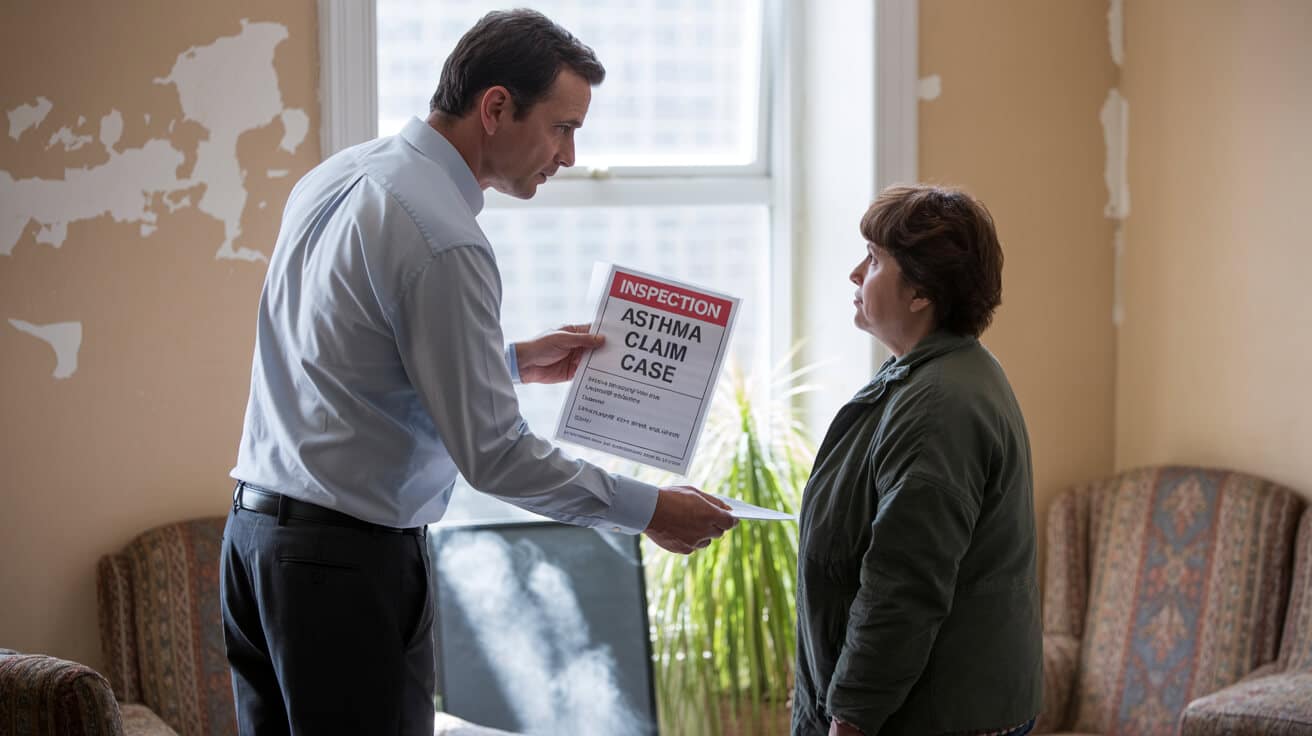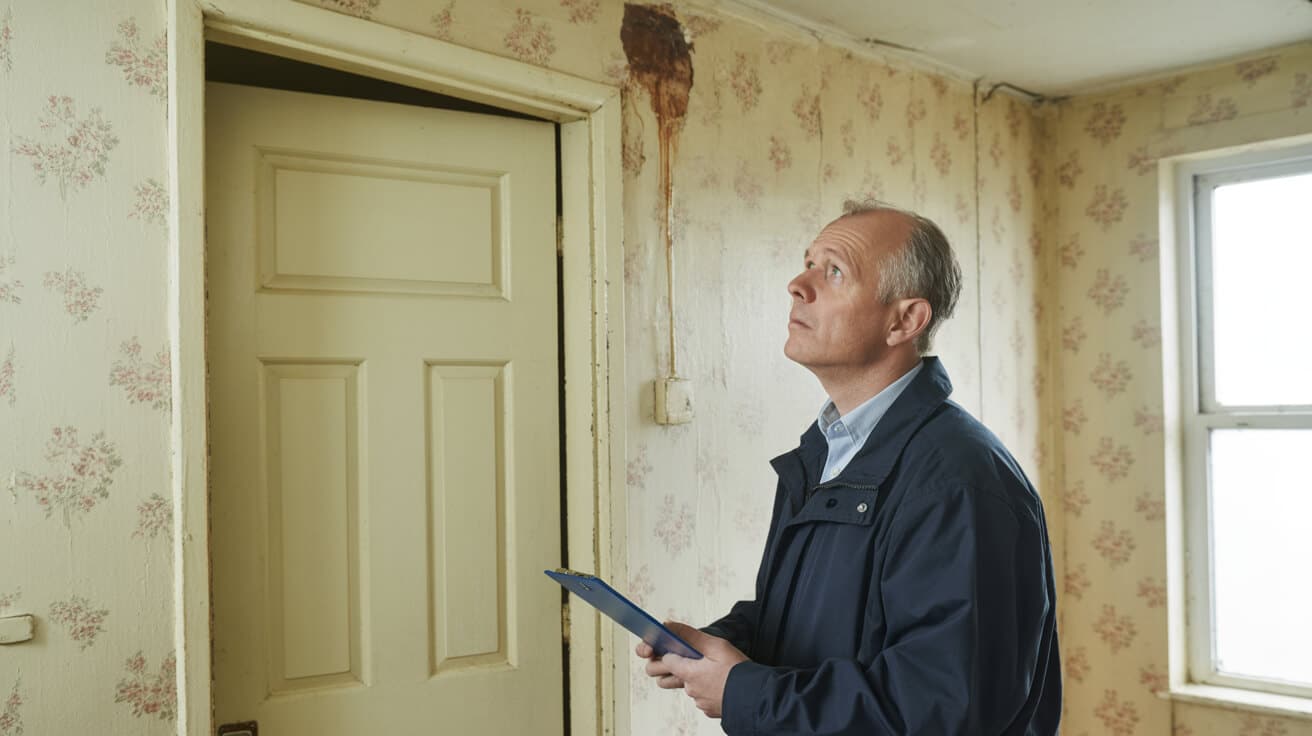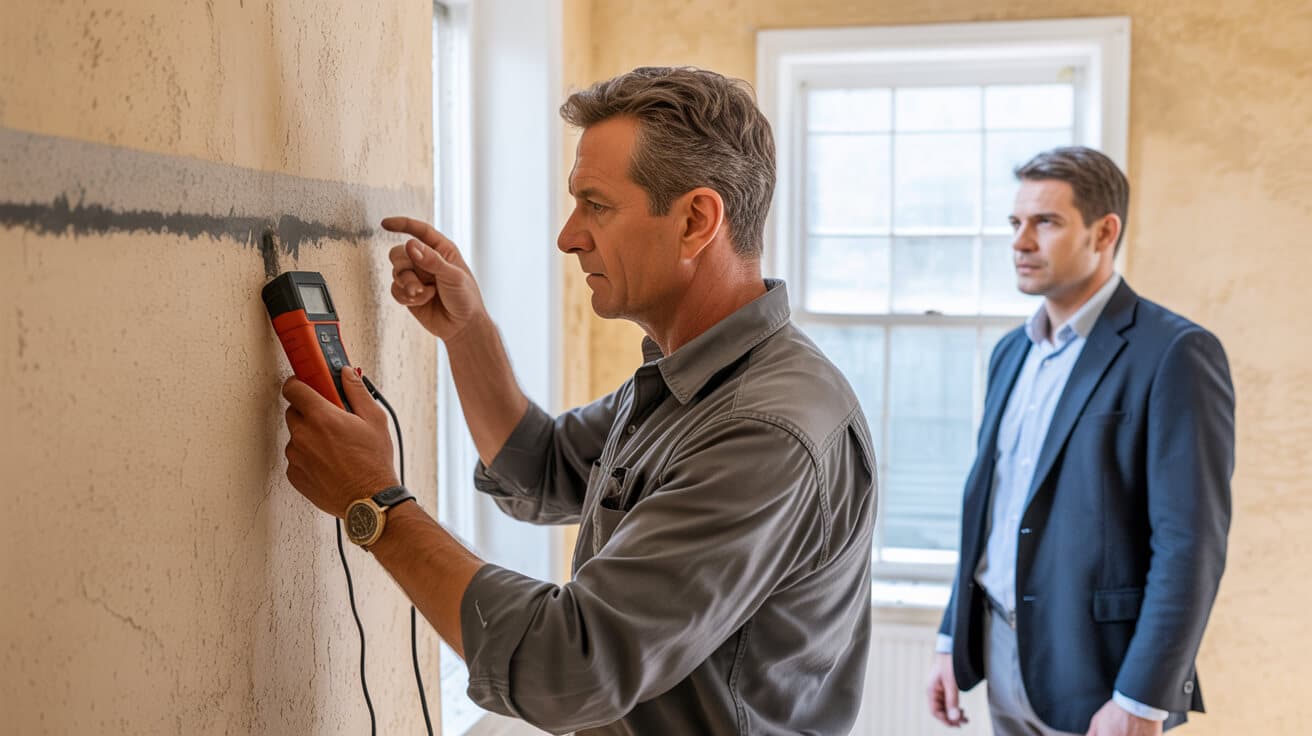 How Preventative Maintenance Affects Your Landlord Insurance Premiums
How Preventative Maintenance Affects Your Landlord Insurance Premiums

How Does Preventative Maintenance Actually Alter Your Landlord Insurance Premiums?
Most UK landlords believe protecting a rental property is just about “not neglecting it.” Reality check: insurers today don’t reward good intentions—they reward evidence. Your maintenance discipline is now an actuarial metric, not a nice-to-have. That impacts every renewal quote, excess level, and claim review you’ll ever face.
The days when a tidy flat and a hand-written logbook earned you lower premiums are over—insurers want digital proof, tracked over years, not weeks.
Landlord insurance in the current UK market is assessed with digital eyes. A single missed service or unchecked damp patch doesn’t just inconvenience a tenant—it raises your risk profile. That, in the language of underwriters, means one thing: you pay more. If you want cheaper premiums, faster claims, and long-run protection, preventative maintenance isn’t a suggestion. It’s the lever with the biggest multiplier effect on your returns.
What’s Behind the Rise in Maintenance Demands from Landlord Insurers?

You’re not imagining it: insurer expectations around maintenance have become relentless. Why? Two key drivers—data and risk.
First, insurers face higher costs from claims that stem from “gradual deterioration”: leaks, rot, worn electrics, or unchecked pests (PCLA Claims). Second, digital property records mean underwriters see everything: whether you’ve kept up with gas and EICR inspections, or if you only call for reactive repairs.
Insurance policies are now assessed on the assumption you’re running a real maintenance programme—not just paying lip service to legal basics.
The implication? Insurers reward landlords whose track record shows anticipation, not laziness. Documented service visits, certificates, and photographs demonstrate risk mitigation. When you deliver only the minimum—say, a spotty log or delayed check—your property lands in the insurer’s high-risk pool. Their penalty? Raised premiums, stricter exclusions, or at worst: refusal to cover you altogether.
Failing to evolve often means finding out, on the day of a claim, that “doing your best” doesn’t count. In this game, there’s no room anymore for goodwill—just well-structured, date-stamped evidence.
Which Maintenance Records Truly Lower Your Insurance Costs?

Let’s get specific: not all maintenance is equal. Today’s underwriters prize proof—with four digital pillars standing out:
- Gas Safety Certificates (CP12s): — renewed annually, archived two years min.
- Electrical Installation Condition Reports (EICRs): — at least every five years, sometimes more.
- Fire, smoke, and CO alarm logs: — including photo documentation, maintained via digital tools.
- Full repair logs: — receipts, before/after images, and digital timestamps stored in landlord or property management apps.
Landlords relying on scraps of paper or memory invite higher scrutiny, slower claims, and denied payouts. *(Total Landlord Guide, 2024)*
When a claim is filed for, say, water damage, insurers don’t just want to see a receipt that you fixed a pipe. They want evidence of the inspection programme that prevented bigger losses—and every year you can evidence this, your renewal risks shrink.
Going cloud-first with records—no more lost documents, no scrambling for receipts—signals to insurers: this landlord is low-risk, not a gamble. The payoff comes fast: some clients see 5–10% premium reductions within a renewal cycle if their maintenance documentation exceeds baseline standards.
What Are the Real Risks When Maintenance Slips? Claim Denials, Premium Surges, and Lost Insurance

Where’s the threat? Insurers routinely deny claims on the grounds of “gradual deterioration” or lack of “reasonable care”—these aren’t rare, but the most common causes for rejection in the UK market (Bateman Group). Worse, rejection isn’t private—insurers share risk data. The ripple? You pay more, lose options, and sometimes get forced onto uncompetitive, high-excess policies.
It’s never just the single fix you miss—it’s the cumulative loss of trust, options, and money that compounds year after year.
Unchecked leaks, skipped alarm tests, or a forgotten boiler service mark you as a higher risk, which increases your renewal costs across the board. But when you document regular care and demonstrate that each safety system is proactively maintained, claim disputes become rare. It becomes easier to negotiate excesses, drop premiums, and retain insurance even as the market tightens.
Your diligence today is tomorrow’s leverage—neglect is the single most costly plan you can choose.
Which Maintenance Tasks Make the Biggest Difference—And How Should You Evidence Them?

Three categories of proof stand between you and premium savings—or, conversely, between you and nasty letters from underwriters:
- Annual statutory checks: (gas, electrics, fire safety): These are non-negotiable. Save the digital reports, schedule reminders, and archive photos of work completed.
- Quarterly walkthroughs and check-ins: Go beyond check-in/check-out forms. Mid-tenancy inspections with photographic logs help demonstrate “active care” and close the loopholes insurers use to argue neglect.
- Rapid, logged repairs—even minor issues: Fixing a cracked tile, leaky gutter, or loose handrail on the spot—and capturing before/after documentation—proves you contain risk *before* it becomes a payout candidate.
Modern landlord software or apps do the heavy lifting. But if you’re still running a spreadsheet and loose receipts, upgrade—insurers can and do examine your audit trail before approving claims or discounts.
Insurers look for regularity (not just emergency calls), promptness in repairs (not deferred fixes), and third-party certifications (wherever feasible). It isn’t about bureaucratic box-ticking; it’s about removing every ounce of ambiguity in a claim.
Does Bare-Minimum Legal Compliance Protect You From Insurance Surprises?

Not anymore. Sticking to legal minimums meets statutory duty—but insurers now expect a higher standard, and spell it out in policy clauses (NRLA). In 2024 and beyond, most landlord policies contain explicit requirements (sometimes buried in the small print):
Failure to uphold ongoing maintenance of safety systems as specified in the policy wording may render cover void if an issue arises *(Legislation.gov.uk, 2018 Act)*
That’s a harsh truth: councils can penalise you, but insurance companies go further—they deny cover, exclude claims, or cancel policies retroactively. It’s not paranoia; it’s pay-out protection on their end. Council warnings, unresolved repairs, or missing certificates turn up first in your claim review.
If your maintenance programme starts and ends with “meeting the law,” you’re now below the standard that insurers rate as low-risk. The best landlords turn statutory requirements into the first rung of a compliance ladder—not the end point.
How Digital Maintenance Records and Professional Coordination Actually Save You Money

There’s an operational edge that most landlords miss: digital records and professional management don’t just save time—they produce cash savings the market didn’t reward until recently.
Today, platforms like All Services 4U automate:
- Certification reminders—never miss a date or document.
- Photo and certificate upload by technicians—auditable proof, no drama.
- Logbooks that track even the small fixes—no gaps = less scrutiny.
- Insurer-ready summary reports—one download, hassle-free.
Systematic digital proof isn’t admin—it’s your audit shield against exclusions and surprise premium hikes.
For busy landlords or portfolio managers, professional partners like All Services 4U integrate every compliance check, repair, and supporting photo into a cloud-based system. Insurers increasingly tie premium discounts, faster claim approvals, and even policy renewals to this kind of evidence stack. For multi-property operators, the compounded financial upside is substantial—not just in savings, but in hours and headaches avoided.
Systematic documentation beats “I remember fixing that”—every time.
What’s the Long-Term Financial Impact: Crunching Neglect Versus Prevention

Neglect is expensive by design. Missed maintenance isn’t just a griping tenant—it’s a future of repeat claim disputes, slow adjustments, and poor renewal offers (Plan Insurance). Third-party data shows that properties with patchy maintenance logs pay up to 25% more in annual insurance, and suffer higher excesses and stricter loss controls.
Letting the little tasks slip—failed gutter clearance, moss on tiles, a late alarm test—almost always unravels as bigger losses: leaks, mould, or voided claims. None are covered on “wear and tear” grounds if your records are incomplete. By contrast, the landlords who log, certify, and photograph everything position their business as a low-cost risk in the underwriting world.
Want extra leverage? Digital logs, managed by a professional partner, give you proof for every contested item—and that’s a direct line to lower costs, higher profits, and peace of mind.
Future-Proofing Your Investment: Why Booking Preventative Maintenance with All Services 4U Gives You an Unfair Advantage
You’re not running a hobby. The future value of your buy-to-let, its insurability, cash flow, and even regulatory standing, hang on the maintenance habits you deploy today. All Services 4U is built around this new insurance reality: coordinating every inspection, fix, and log so you can evidence, not just promise, superior care for your property.
Protect your investment. Secure your future earnings. Sleep at night knowing the paperwork is watertight.
With City & Guilds-certified, compliance-literate technicians, Every check, repair, and digital record is collated into a single auditable trail. No more stress when insurers, councils, or letting agents demand proof—your claim file is ready before it’s even needed. Our clients consistently unlock lower premiums, faster claim approvals, and a market reputation as landlords “who do it right.”
Book a preventative maintenance package with All Services 4U—slash your insurance costs, sharpen your claims profile, and protect the income you count on, year after year.
Frequently Asked Questions
What maintenance strategies deliver the quickest reductions in landlord insurance premiums?
The fastest way to bring insurance premiums down isn’t just about ticking boxes—it’s about proving you systematically prevent risks from day one. Insurers now prize clear evidence that you do more than “respond”; they want to see you schedule, log, and document every check. When you shift from crisis-fixing to routine, digitally tracked maintenance, you can realise up to 15% annual savings within two renewal cycles. This isn’t just a compliance move—insurers are actively looking for these signals when pricing your policy.
Routine logs, timestamped photos, and prompt action on even minor issues transform you from a standard client into a “preferred risk.” UK property underwriters now cross-examine not only your safety records, but also the speed with which you act on gutter checks, leak flags, or tenant-reported issues. The faster and more transparent your maintenance response, the more your policy costs decline—well beyond what basic compliance achieves.
Modern risk management is less about certificates and more about catching the fix before the claim ever lands.
Which practical steps deliver real cost change?
- Book and digitally archive CP12 gas and EICR electrical tests—retain for 5+ years for instant insurer reference.
- Log every fire, smoke, and CO alarm test, appending photos and details monthly or quarterly.
- Schedule gutter and roof checks before winter—insurers look for pre-season action to head off water claims.
- Record even minor repair jobs with before-and-after evidence—insurers favour portfolios with zero “ghost tasks.”
- Respond to tenant repair requests within days and log your communications.
Landlords who let gaps or delays creep into documentation often see a “risk surcharge” at renewal. Instead, digitise your process, share records with your insurer, and see premiums adjust in your favour.
How can maintenance record gaps threaten both current claims and future renewals?
Missing documentation is no longer just a clerical headache—it now poses a direct financial risk. Insurers can (and do) reject claims, load premiums, or decline renewal when evidence trails are incomplete. In 2024, more than 18% of UK residential landlord claims failed due to “inadequate proof of preventive action,” primarily missing logs on leaks, drainage, and alarm routines (Bateman Group, 2024). These judgement calls have become automated: a single missing record can follow you from one insurer to the next, increasing costs for years.
What many don’t realise is that digital databases now link claims and maintenance gaps across the insurance sector. If you fail to evidence prompt response on a leaking roof, that silent red flag may trigger higher excesses, lower quote availability, and even blanket non-renewal—no matter your historic compliance.
A missing log can become a multi-property penalty. Insurers share risk signals, and documentation gaps ripple across your portfolio.
What are the unseen penalties of record “blind spots”?
- Full or partial claim refusals under “lack of reasonable care”
- Automatic premium uplifts at each future renewal—risk flags persist
- Fewer willing carriers for your properties, narrowing your negotiation power
- Difficulty securing competitive rates for multi-property or HMO portfolios
Safeguard your position by embedding real-time digital recordkeeping into your workflow. Treat it as non-negotiable insurance for your insurance.
What digital records now drive insurance discounts—and how do landlords streamline them?
Insurers expect more than certificates—they now want centralised, shareable logs linking each repair, check, and alert to a specific date, technician, and location. Modern systems let you upload certificates, log minor repairs, and attach before/after photographs, creating indisputable “evidence chains” at every policy review. All Services 4U’s digital dashboard, or similar apps, automate these evidence trails with minimal effort.
| Record Type | Minimum Retention | Premium Impact |
|---|---|---|
| CP12 Gas/EICR Certificates | 2/5 years | Baseline + lower premium |
| Safety/Alarm Check Logs | 1–2 years | −5–10% premium |
| Job Photos (All Maintenance) | 2+ years | Faster claim resolutions |
| Tenant Complaint Responses | 2+ years | Reduces risk profile |
| Professional Receipts | 2+ years | Validates expert action |
How does “standout” evidence look for 2025?
- Mobile logs with time, location, and images archived to a cloud account
- Scheduled service reminders built into workflows—no missed intervals
- Instant retrieval and digital sharing for underwriter or broker checks
- Full repair records, from damp warnings to window latch adjustments
Move beyond spreadsheets or scattered emails—these digital records both accelerate insurance payout and push your renewal costs downward.
Why do small, missed repairs have a major effect on claim outcomes?
Minor jobs left undocumented are where most claims unravel. Insurers scrutinise whether issues like slow leaks, unsealed cracks, or skipped alarm checks were actually sudden events—or repeated oversights. If you can’t deliver a clear, time-stamped maintenance trail, the insurer may decide the loss was “preventable,” drastically limiting payout, even if you hold every legal certificate.
Recent cases show how a delayed or missing record—such as an unlogged gutter clear before winter—can be the single factor that voids a payout for thousands of pounds in water damage or mould remediation. For insurers, “unrecorded” and “unaddressed” have become synonymous; the proof bar keeps rising, making digital logging your first line of defence.
If it isn’t timestamped, it might as well not exist—prevention now counts for more than reaction on every claim.
How do you ensure minor jobs never undermine your insurance?
- Log every inspection after storms or seasonal weather—attach images for proof
- Store all tenant reports and your actions, aiming for response within 72 hours
- Use app-based reminders for recurring tasks and instant closure logging
- Remember: if it isn’t in your digital records, assume it’s invisible at claim time
Building this discipline means missed repairs stop being claim-breakers and become insurance advantages.
Which compliance standards carry the most weight in landlord insurance pricing?
Today’s underwriters demand more than annual gas and periodic electrical certificates—they want proof of a maintenance culture built on regular, expert inspections. The legal minimum—Fitness for Human Habitation Act, CP12, EICR, and fire safety assessments—no longer secures the best rates. The differentiators are time-stamped logs for legionella checks, pre-winter damp assessments, and tenant-reported defect resolutions.
Monthly safety checks, documented contractor credentials, and responsive repair histories are what insurance models now reward. Audits are increasingly digital and rapid: a missing record or late fix triggers immediate pricing adjustments, irrespective of legal baseline.
What sets the best apart from the rest?
- Cloud-stored compliance: digital copies for every certificate, available up to 5+ years
- Logs with before/after photos for all maintenance and repair activity
- Evidence of proactive response to tenant and environmental issues (within days)
- Recorded legionella and fire checks—especially for HMOs or blocks under the Fire Safety Order
- Audit-ready documentation for every correction or preventive measure taken
Landlords who can’t rapidly produce this evidence see higher premiums, more admin, and less trust from both insurers and tenants. Treat documentation as a profit tool, not a burden.
How do technology upgrades now drive direct insurance savings and faster claims?
The technological transformation in property maintenance has made smart evidence a pricing tool as much as a compliance necessity. UK insurers now actively reduce premiums for landlords who leverage smart leak detection, IoT-enabled smoke and CO sensors, and app-based maintenance tracking. These devices provide minute-to-minute digital proof—insurers trust the data and, in many cases, automate claim approval processes for policyholders that use them.
With platforms like All Services 4U, digital logbooks, synced certifications, and instant upload of event-triggered photos create an “always-on” audit trail. A 2024 market study found properties using connected sensors and unified maintenance records achieved average renewal discounts of 7–11%—often on top of better claim acceptance rates.
Insurance pricing now follows the quality of your logs—every hour you automate, every event you track, chips away at your premium.
Which tools matter most for savings and peace of mind?
- App-driven dashboards that centralise all property records for real-time access
- Leak, humidity, and smoke/CO sensors with automatic alerts—linked directly to maintenance logs
- Routine inspection photos and logs, instantly archived from the field
- Scheduled, automatic reminders so nothing slips through the cracks
Every step toward a connected, app-enabled workflow makes you the underwriter’s “ideal landlord”—and secures the best pricing as soon as your next renewal lands.
Why do landlords who work with All Services 4U achieve lasting insurance advantages?
Partnering with All Services 4U means shifting maintenance from a liability to a lever—our team merges regulatory inspections, repairs, and instantaneous digital proof so you can focus on property growth, not paperwork. Client properties receive year-round compliance, rapid action on every defect, and a full, cloud-based maintenance history. When insurers or brokers ask for proof, it’s never an afterthought—it’s built in.
Every fix, check, and tenant query gets a time and GPS stamp. This transforms your portfolio into a reduced-risk property on every renewal, giving insurers nothing to flag and tenants every reason to renew leases. Data from current clients shows claim payout cycles can drop by two weeks, premiums fall by up to 15%, and admin load decreases. Your compliance is never in question, and your property’s value rises as a result.
The difference between complexity and confidence is in your evidence trail—every All Services 4U fix stacks the odds in your favour.
Demand more than maintenance; demand a system that multiplies your insurance leverage, proves your professionalism, and brands your portfolio as top-tier. Book a custom support plan and see the benefit run from your inbox to your bottom line.



